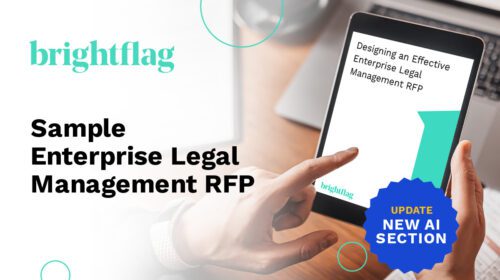Law Firms Don’t Have to Hate Your E-Billing Software
E-Billing Best Practices and Why They Matter
What’s the fastest way to get someone to start using your software? Simple. Put their paycheck on the other side of login.
Few tools prove the point as clearly as legal e-billing software. Law firms hoping to get paid on time (or at all) have little choice but to adopt and learn whichever legal billing software platform their client prefers.
That doesn’t mean they have to like it, of course. (Narrator: They have not.) But clients who select truly toxic tech aren’t doing themselves any favors either.
Frequent downtime, convoluted workflows, and silent support teams? Those aren’t petty problems. They’re operational obstacles that prolong the billing process and distract law firms from the work you want them to deliver.
Separate subscription fees that make lawyers pay for the privilege of submitting invoices? That trivial reduction in outside counsel spend is rarely worth the resentment it can breed in your business partner.
So if you’re ready to move beyond e-billing software that antagonizes outside counsel, consider a solution to invoice management for law firms that is designed with the following e-billing best practices in mind.
Soften the Switch
Changing behavior is always hard. So if you want to reduce resistance and encourage progress, it’s always best to limit the number and complexity of new habits to learn. In terms of software adoption, the solution comes down to a combination of design and support.
Well-designed legal e-billing software doesn’t ask too much from outside counsel. It lets them submit invoices in whatever format (scanned, PDF, LEDES) they already use instead of adding a conversion step. It also lets them skip the task of UTBMS coding entirely and leave the burden of service classification to the client.
Ideally, the overall design will be so elegant and intuitive that any new habits can be learned without instruction. But a complete solution doesn’t depend on ideals. Proactive training and responsive support should also be available to law firm users in case any unforeseen challenges arise.
Accelerate the Payment
Everyone appreciates receiving money on or ahead of schedule. And that’s doubly true among law firms that favor cash basis accounting. The good news is there are several e-billing software features that can help clients deliver this unique delight.
AI-assisted legal invoice review alone has been known to slash average approval times in half. Luxuries like automated tax compliance and accounts payable integrations can also streamline the crucial handoff between Legal and Finance.
When done right, the final outcome is consistently faster deposits with significantly fewer emails exchanged along the way.
Share the Progress
Legal e-billing software has traditionally been a black-box experience for outside counsel. Invoices go in, payments come out, and it’s anyone’s guess what happens in between. Today’s emerging alternatives, however, turn transparency into a default setting.
On a project level, e-billing software can now offer outside counsel a real-time view of work-in-progress. Is the invoice pending, approved, or paid? Skip the status update email and click into the dashboard to see.
The more exciting innovations, however, exist at the relationship level. The rise of sophisticated analytics and vendor management features has given clients the opportunity to objectively rate and share how outside counsel are performing. From individual metrics to industry benchmarks, law firms no longer need to wonder where they stand.
Raise the Bar
Don’t let legacy tools skew your standards. Legal e-billing software that’s “not so bad” isn’t cause for celebration. Even settling for “quick and painless” lawyer invoicing software ignores the potential of today’s technology.
Your platform should do more than just provide receipts for completed work. For it to be the best legal billing software, it should also incorporate e-billing best practices, and surface insights that reveal how to do better work in the future.



